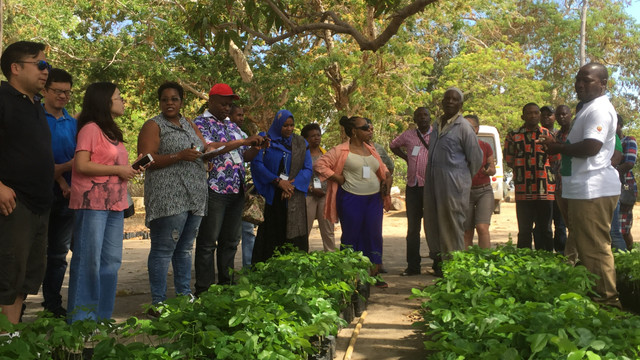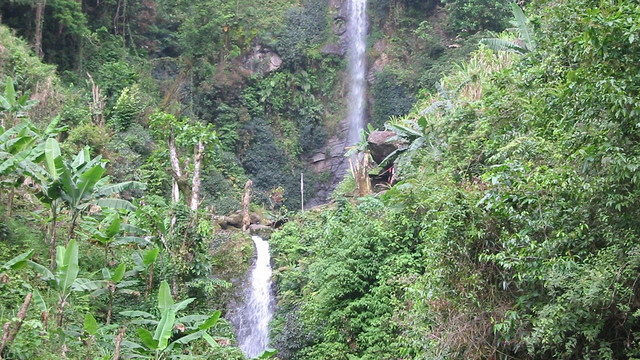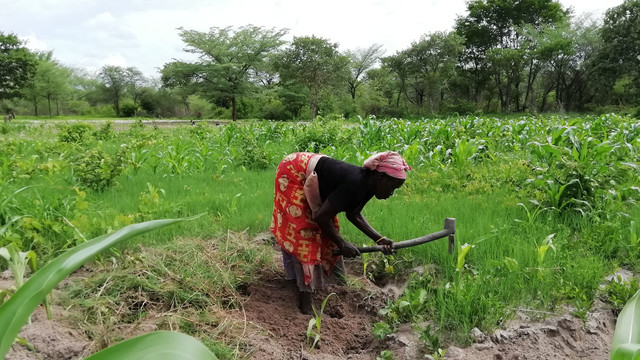Report calls for REDD+ to Invest in Forest Communities
Income generated from REDD+ should be given to forest communities to invest in their future, recommends a new report by The Forests Dialogue (TFD). Investing locally in this way should be part of understanding REDD+ as integral to broader development among forest-dependent communities.

The Charnawati watershed in Dolakha, Nepal is one of the three sites selected for the first REDD pilot projects in the country
The new report Giving REDD+ Life, examines the relationship between Reducing Emissions from Deforestation and forest Degradation (REDD) and broader development goals, and explores how and why the two should be integrated. The report is being launched as the advisory bodies for the United Nations Framework Convention on Climate Change meet in Bonn this week, and one month before the Rio+20 summit in Brazil—with “green economy” and financing high on the agendas of both meetings.
“The most sustainable, long-term conservation occurs when local communities have access to and control over their resources,” says Gary Dunning, Executive Director of TFD. “These resources include those generated by REDD+ initiatives, but the benefits should be used to support broader, sustainable local development. We need to approach forests as landscapes rather than just sticks of concentrated carbon.”
The wide-ranging report has other recommendations on REDD+ financing and distribution of benefits. It calls for donor agencies to do more to ensure that forest communities receive their share of REDD+ money, and for REDD+ to be linked with broader development funding to support local communities’ livelihoods and development efforts.
“Each country should have a system which tracks and reports the proportion of incentives and payments that actually reach the local level and whether that allocation is sufficient to deliver clear outcomes” says Stewart Maginnis, Global Director of IUCN’s Nature Based Solutions and Rights Group. “It’s there that the actions of farmers, community organizations, NGOs and businesses really determine whether those programs designed to contribute to the reduction of deforestation and to the restoration of forest landscapes—and in local development more generally—succeed or fail.”
The report recommends that more research be done on reducing the costs of REDD+ interventions in countries in order for benefits to be maximized. The report also makes the case for more incentives to entice private-sector investment in REDD+ implementation, as it would improve the chances of local REDD+ work being sustained after donor money dries up.
“REDD+ policies need to create incentives for businesses to get involved in sustainable forest management and to build local capacity for active stakeholder engagement and effective management.” says Joseph Lawson, Global Director of Sustainable Forests for MWV, a global packaging company and key member of WBCSD’s Forest Solutions Group.
Beyond the issues of financing and benefits, the Giving REDD+ Life report looks at key factors in getting REDD+ right for all involved parties, including those related to land tenure and governance of forests and forest resources.
“How to combine REDD+ and the interests of locals and indigenous peoples is a big challenge,” says Estebancio Castro Diaz, Executive Secretary of the International Alliance of Indigenous and Tribal Peoples of the Tropical Forests. “Indigenous communities have rights that need to be respected. The major challenge is the issue of land tenure and the rights to natural resources. Who’s entitled to what? Resolving those issues is very complex. REDD+ is unlikely to succeed and be accepted by indigenous peoples if the issues of rights and tenure are not resolved.”
To download the report in English:
http://environment.yale.edu/tfd/uploads/TFDReview_GivingREDD-plusLife_en_FINAL%20sm.pdf



